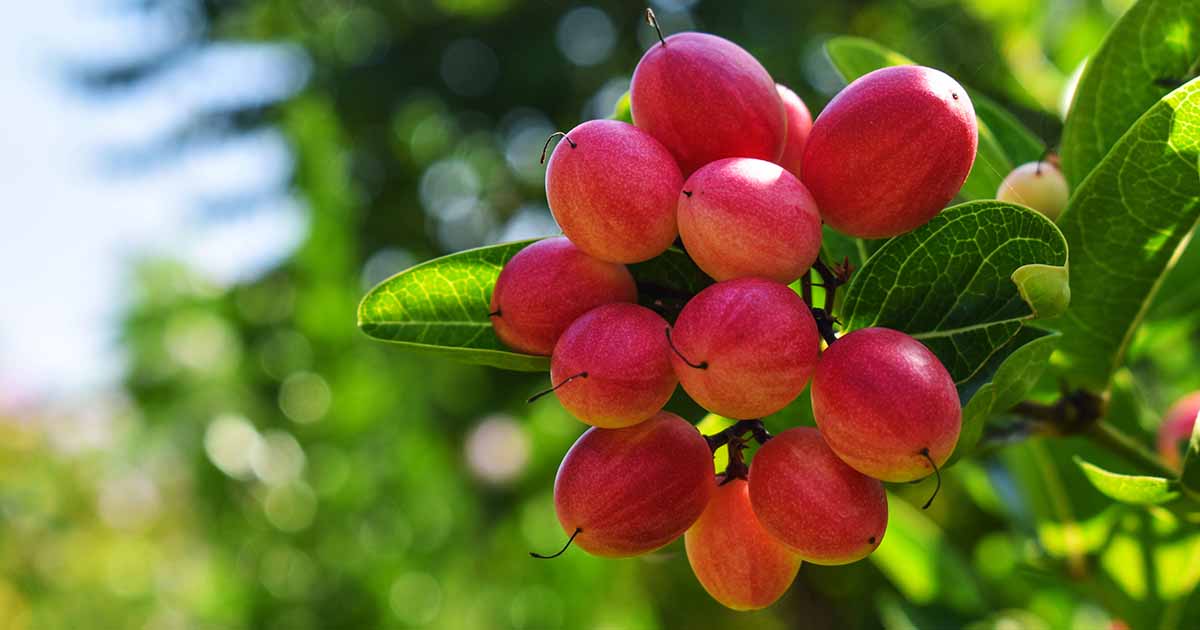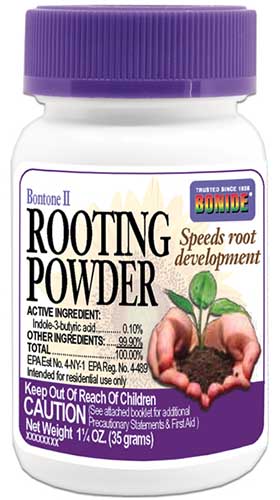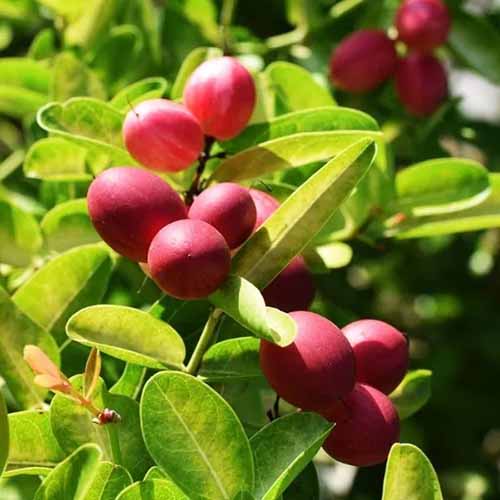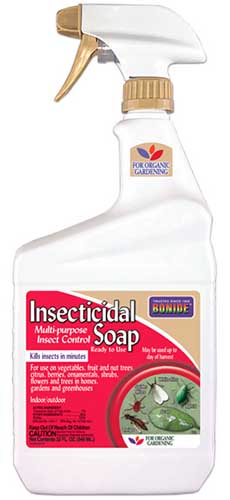Synsepalum dulcificum
True to its identify, miracle fruit performs a seemingly miraculous trick each time you eat it.
Consuming only one berry transforms the flavour of bitter, bitter, and metallic tastes into candy ones, in addition to boosting the flavour of meals typically. What’s behind this magic trick?
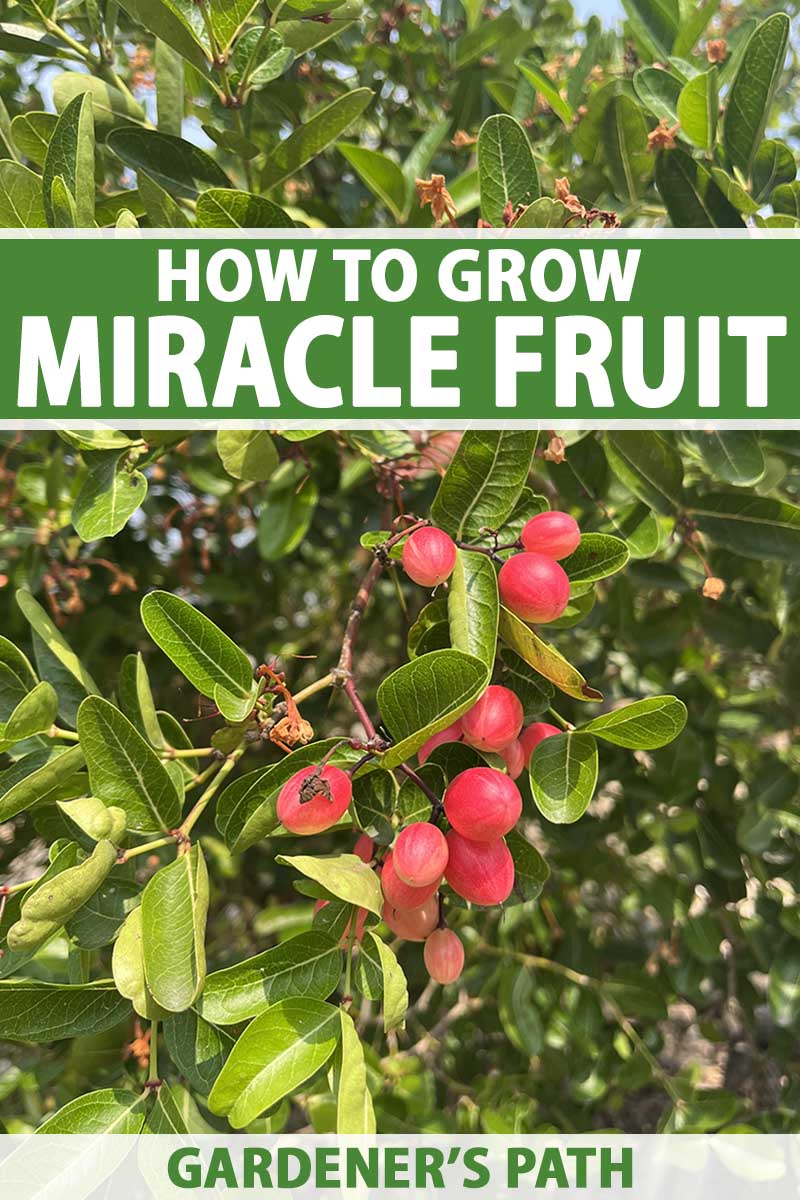
We hyperlink to distributors that can assist you discover related merchandise. When you purchase from one among our hyperlinks, we might earn a fee.
The pulp within the miracle fruit berry incorporates a glycoprotein known as miraculin which adjustments the style receptors in your tongue – successfully blocking the bitter and bitter receptors so solely the candy ones stay lively.
Although the fruit’s pulp shouldn’t be particularly candy, all the pieces you style for about half-hour to an hour afterwards will likely be – even water!
Learn on to study all the pieces you should know to develop this superb plant your self.
What Is Miracle Fruit?
Initially present in a number of West African international locations extending from Ghana to the Congo, miracle fruit can develop outdoor in USDA Hardiness Zones 10 to 11. And you’ll simply develop it indoors or in a greenhouse in cooler areas.
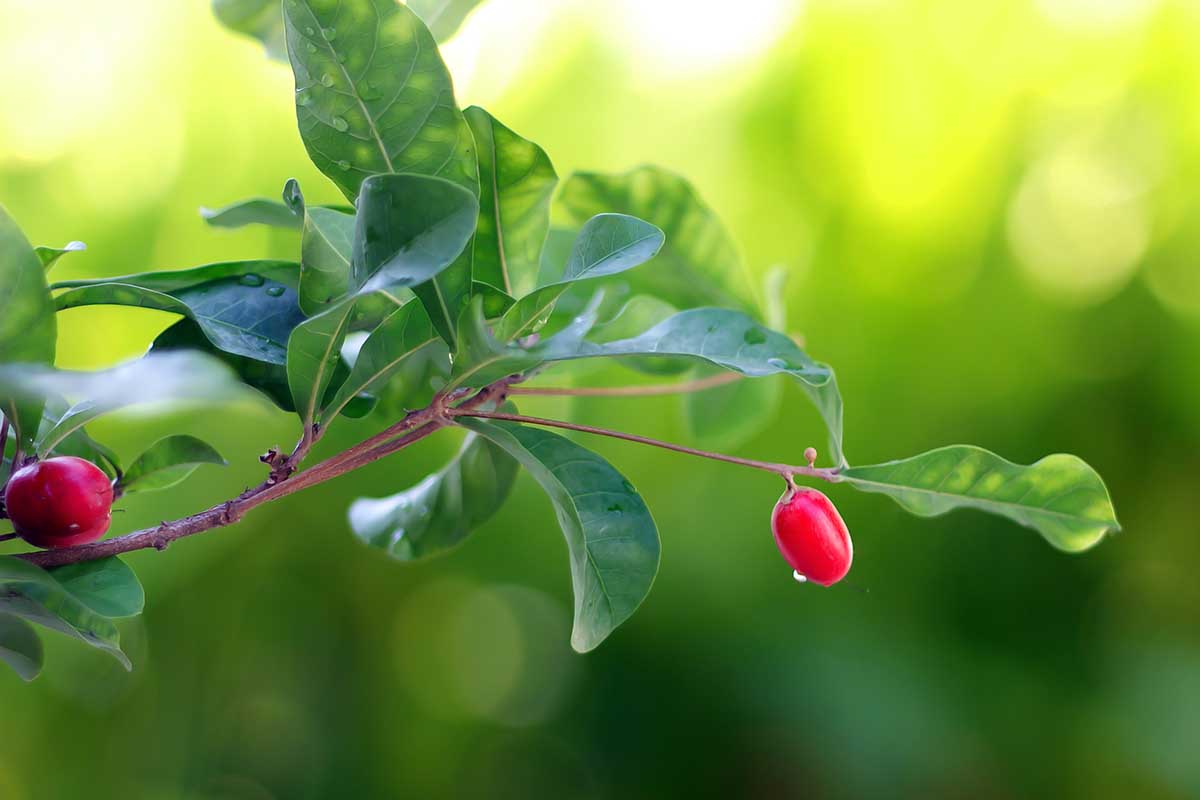
Miracle fruit additionally goes by the frequent names of miracle berry, candy berry, and miraculous berry. And confusingly, it shares its frequent identify with one other, unrelated plant additionally known as the candy prayer plant (Thaumatococcus daniellii).
Miracle fruit belongs to the Sapotaceae household whose members embrace different pan-tropical timber like sapodilla, star apple, and people used to supply shea butter and argan oil.
This neat plant has aesthetic qualities too. Its evergreen foliage is made up of lovely curved or flat leaves, every formed like a pear.
Add to this the petite self-fertile white flowers it produces from spring to fall, generally alongside the sensible purple berries, and you’ve got a blinding sight!
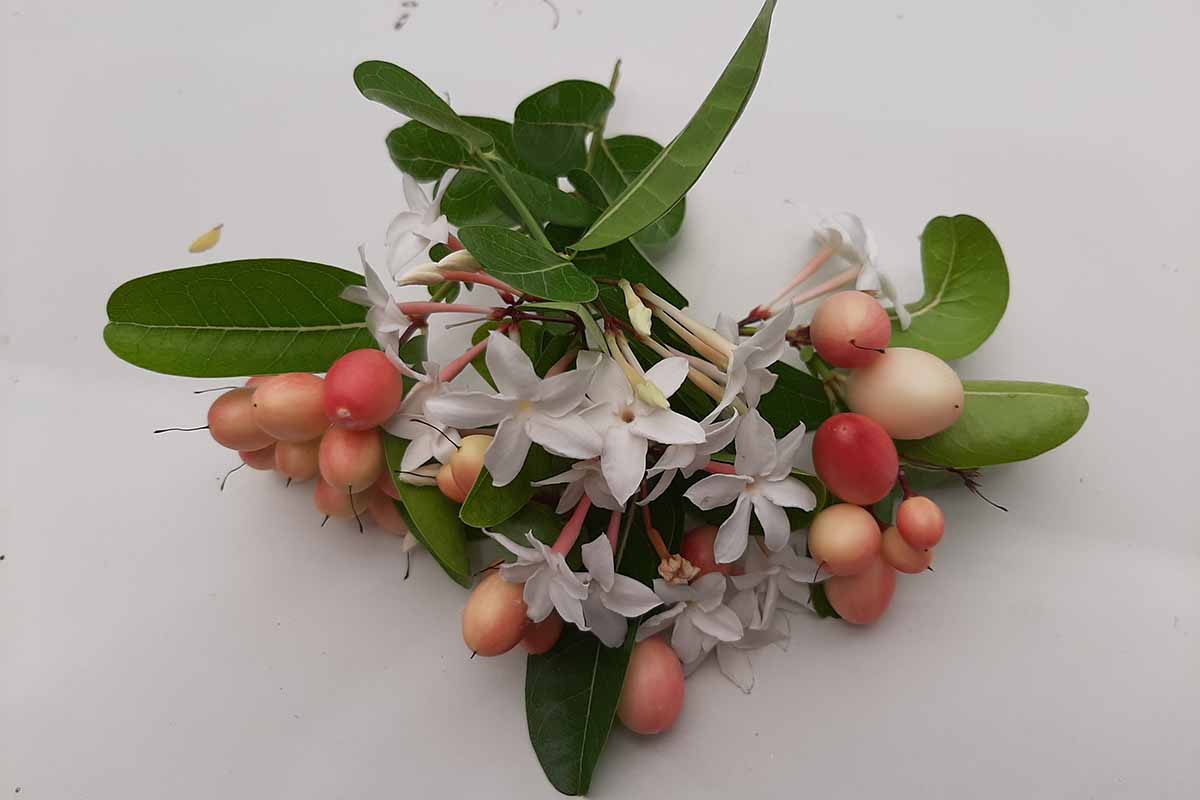
The miracle fruits are egg-shaped berries simply shy of an inch lengthy and half an inch huge.
A big seed takes up most of this house and the remaining is a white pulp which incorporates the protein often known as miraculin.
Grown outdoor, the miracle fruit plant can develop as much as 15 ft tall with an eight-foot unfold, however indoors, in a container, you’ll be able to count on it to high out at simply 4 ft tall and three ft huge, with many specimens staying extra compact.
Cultivation and Historical past
From “taste tripping” events to conspiracy theories and a rock star endorsement, as of late miracle fruit has fairly the fame!
Regardless of its recognition in some spheres, it stays an under-researched and underutilized fruit with potential in lots of spheres of latest life.
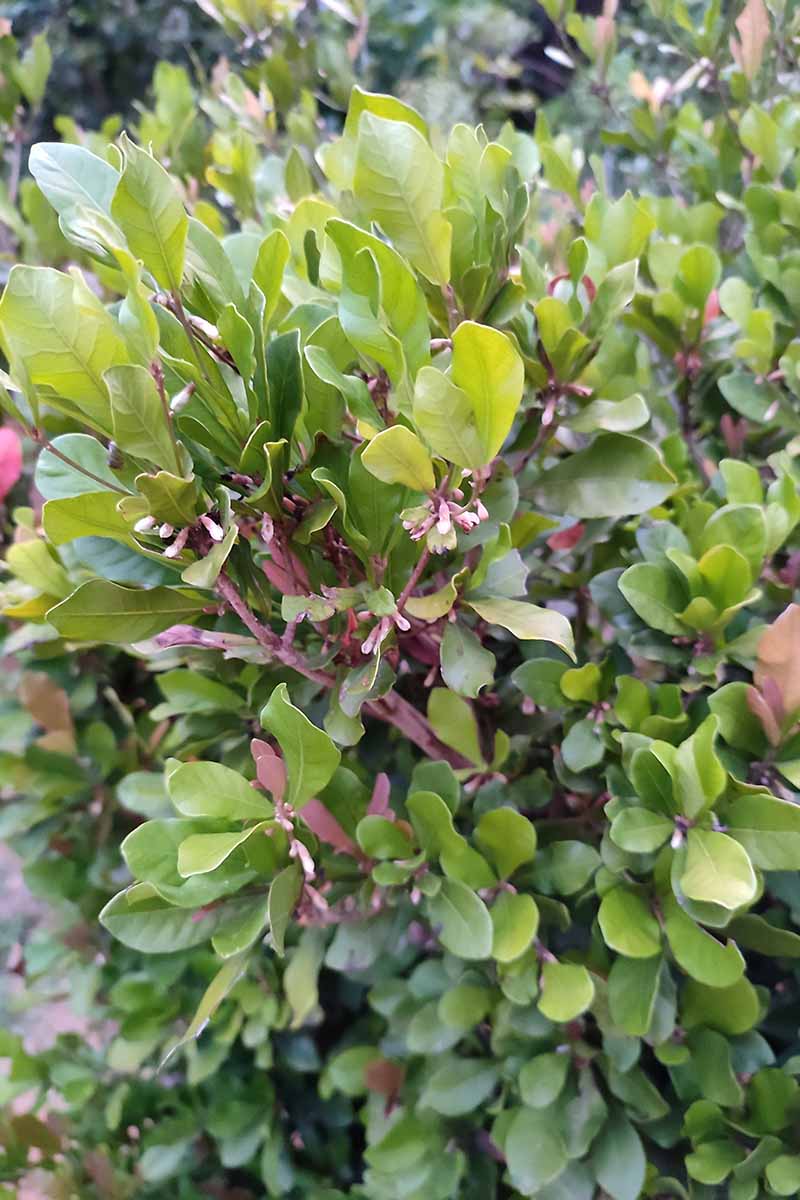
Earlier than we take a look at its worth at this time, let’s discover miracle fruit’s previous.
Though West Africans have used miracle fruit to reinforce the flavour of food and drinks for a few years, Europeans first realized concerning the plant in 1725 from French explorer Reynaud Des Marchais.
In 1852, the chemist William Freeman Daniell studied the fruit, and reporting on its distinctive skill in scientific literature, he known as it the “miraculous berry.”
In 1968, Japanese scientist Kenzo Kurihara lastly found the mechanism chargeable for miracle fruit’s seemingly magical powers when he remoted the glycoprotein miraculin, the substance chargeable for altering style.
Not lengthy after, Robert Harvey, then finishing his biomedical postgraduate research, needed to capitalize on this discovering by promoting extracts from the berry as a low-calorie sweetener to diabetics.
However in 1974, on the night earlier than the product was to be put available on the market, the US Meals and Drug Administration (FDA) all of a sudden banned the product citing that extra testing was wanted.
This motion by the FDA plus quite a lot of occasions main as much as it propelled conspiracy theories asserting the involvement of the Sugar Affiliation in miracle fruit’s demise.
We’ve come full circle and at this time, researchers are learning the berries as a sugar different for these struggling with diabetes.
Moreover, the fruit’s skill to remove metallic flavors skilled by chemotherapy and COVID-19 sufferers is being examined.
Miracle Fruit Propagation
You’ll be able to propagate miracle fruit crops from seed, which is a dependable methodology, however requires persistence because the seedlings are sluggish rising.
Ranging from cuttings can be doable, however it additionally takes time.
The best strategy to get began is to buy a potted plant in your house.
From Seed
When you’ve got an current plant, you’ll be able to acquire the seeds from the berries and propagate them.
Nevertheless, you’ll must work quick because the germination fee rapidly decreases after separating the seed from the pulp. Don’t strive drying the seeds, as they won’t be viable.
After harvesting the berries, merely clear the seed by eradicating all of the pulp.
Utilizing a pre-moistened and well-mixed mix of equal portions of peat moss and perlite, sow the seeds 1 / 4 of an inch deep in containers or a propagating tray.
Cowl your containers with a plastic bag or a dome to extend humidity.
Preserve a temperature between 73 and 86°F (23 to 30°C) and place your seeds in oblique gentle. Preserve the potting medium evenly moist however not waterlogged.
In these circumstances, they need to germinate in just a few weeks.
From Cuttings
If you wish to experiment, you’ll be able to try and propagate miracle fruit via cuttings.
However this methodology takes longer than propagating by seed and has a decrease likelihood of success as a result of this species doesn’t develop adventitious roots simply.
Take a four-inch (10-centimeter) softwood reducing with just a few nodes and two to 5 leaves. Defoliate the underside two inches.
Dip one inch of the defoliated finish right into a powdered rooting hormone comparable to Bonide Bontone II, out there from Arbico Organics.
Bonide Bontone II Rooting Powder
For the propagation media, use coconut fiber by itself or a mix of perlite and peat moss. Put the medium inside a four-inch pot with drainage holes.
Utilizing a pencil, make a gap within the potting medium and plant the reducing one to 2 inches deep.
Place the pot in a location with shiny, oblique gentle. Preserve the potting medium moist however not waterlogged. You’ll be able to preserve humidity by securing a plastic bag over the pot or setting it beneath a humidity dome.
You’ll be able to test for rooting by eradicating the plastic bag and giving the reducing a mild tug. When you really feel resistance, you’ll know that roots have fashioned.
When your cuttings root, transplant them into bigger pots, roughly two inches greater than the rooting pot.
Learn how to Develop Miracle Fruit
Now that you just’ve realized a bit about miracle fruit, let’s dive into methods to handle this particular plant.
While you first convey your miracle plant house, it’s possible you’ll want to transplant it into a special pot.
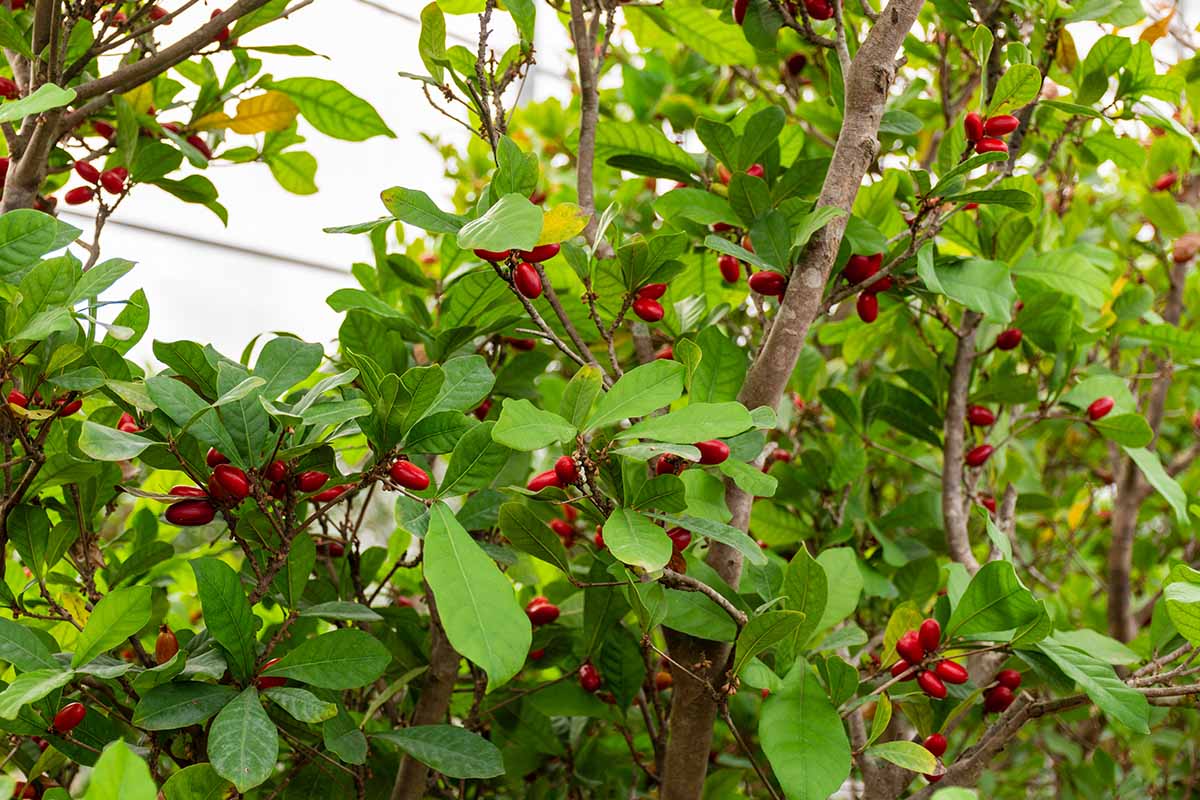
Select a container that has holes on the backside for drainage, and that’s about two inches wider and taller than the prevailing pot. You’ll possible want to extend the dimensions of the pot each two years or so.
You’ll additionally need a saucer to position beneath the pot to catch water because it drains out.
Miracle fruit wants acidic soil with a pH of 4.8 to five.5, so a half-and-half mixture of peat moss and perlite – or peat moss and silica sand – is good. When you go for the latter, make sure that the silica has a impartial pH – these made out of limestone will likely be extra alkaline.
S. dulcificum grows outdoor in USDA Hardiness Zones 10 to 11, so it doesn’t admire temperatures decrease than 35 to 40°F. Indoors, preserve it between 60 and 90°F in a location with shiny, oblique gentle.
And when the temperature outdoors is agreeable, you’ll be able to transfer your plant outdoor for the summer time months if you want.
These crops are finicky in relation to watering. They react badly to faucet water – whether or not that’s as a result of faucet water is handled or as a result of it has a excessive pH worth – the jury remains to be out. It’s finest to make use of rainwater or filtered water as a substitute.
Miracle fruit wants constant moisture however the potting combine shouldn’t be allowed to turn out to be waterlogged.
When the highest two inches of soil are dry, it’s time to water. Water deeply till liquid runs out of the underside of the pot, and keep in mind to empty the saucer afterwards!
And since its pure habitat affords quite a lot of humidity, you’ll be able to recreate this surroundings by misting your plant as soon as every week.
Pollination
Miracle fruit crops are self-fertile, so that you solely want one plant for profitable pollination and fruit set. That being mentioned, when you have two, it’s possible you’ll get a bigger harvest.
Equally, placing your plant outdoors throughout flowering (if the temperature permits!) will allow bugs and the wind to extend pollination.
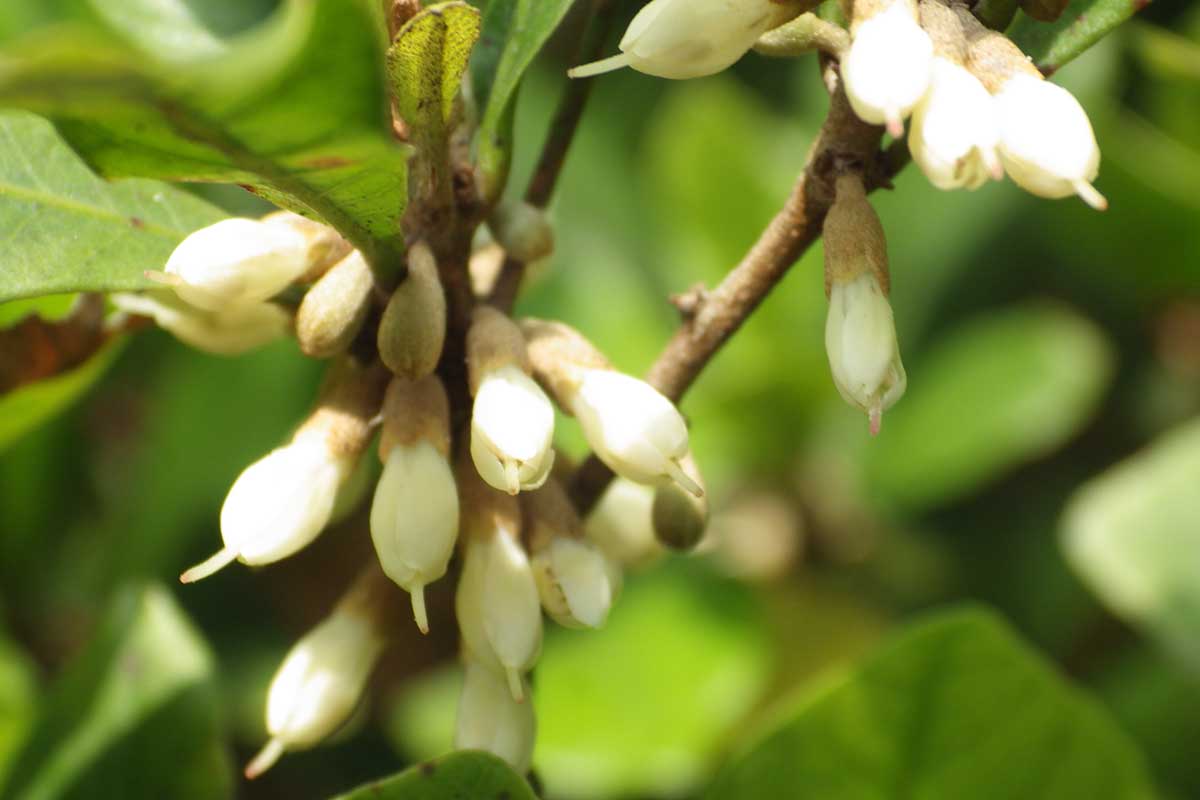
Indoors, you’ll be able to hand-pollinate your plant by manually transferring pollen between flowers with a cotton swab or paintbrush. When you’re brief on time, you’ll be able to gently jiggle your plant or caress its leaves and branches to encourage pollination.
If efficiently pollinated, you’ll be able to count on fruits three to 6 weeks after flowering.
Indoors, miracle fruit will typically flower twice between Might and October. Planted outdoors in appropriate areas, it could possibly flower all 12 months spherical for a continuing harvest.
Indoors it is not going to usually produce fruit from November to April, however will retain its leaves and should proceed to develop.
Rising Suggestions
- Present acidic, well-draining potting combine.
- Develop in shiny direct or filtered daylight indoors and partial shade to full solar outdoor.
- Preserve soil constantly moist, however not oversaturated.
Pruning and Upkeep
Miracle fruit crops don’t essentially should be pruned except you need to create a specific form or measurement, or there’s proof of harm or dying branches.
One of the best time to prune is after fruiting is completed for the 12 months. Even then, preserve your pruning gentle.
Container-grown crops will solely attain two to 4 ft tall and one to a few ft huge. If you wish to preserve your plant compact, prune off the highest branches. This may encourage the aspect branches to fill in and stimulate flowering.
Common fertilization is important for fruit set and plant well being, however you’ll should watch out to not overfertilize as this will harm the roots.
Feed your miracle fruit plant with a water-soluble 20-20-20 fertilizer about as soon as a month. Make sure that to solely apply fertilizer when the soil is moist, as this helps forestall any potential harm to the roots.
In case your plant outgrows its present container you’ll be able to repot into a bigger vessel as wanted and refresh the potting combine, usually each one or two years.
The place to Purchase
You’ll be able to generally discover crops out there at native nurseries, significantly in areas like Florida the place they will develop outdoor. In any other case, on-line nurseries can ship to your door.
You will discover a miracle plant that’s between 18 months and two and a half years previous in a #1 container from Nature Hills Nursery.
Or you’ll find a specimen in a three-gallon pot out there from Quick Rising Bushes.
There are a variety of S. dulcificum cultivars, however they are often tough for the house gardener to seek out.
Researchers Lynhe Demesyeux, Maria Brym, and Alan H. Chambers on the College of Florida studied the qualities of assorted cultivars of their analysis on S. dulcificum.
The highest picks are the cultivar often known as ‘Cherry’ which boasts the biggest fruit with probably the most pulp, in addition to ‘Cardinal’ and ‘Imperial’ which produce probably the most fruit per season.
Different strong selections are ‘Scarlet,’ and ‘Vermilion’ which exhibit excessive fruit pulp weight which equals extra miraculin – and due to this fact extra enjoyable!
Managing Pests and Illness
Happily, miracle fruit has a pure resistance to many ailments – however it could possibly’t evade the infamous root rot.
Grown as a houseplant, it is going to be vulnerable to lots of the identical pests that have an effect on different indoor crops together with scale, mealybugs, and spider mites.
Pests
You would possibly discover the next pests like your miracle fruit plant simply as a lot as you do! Right here’s what to be careful for and what to do in case you discover them.
Mealybugs
The primary signal of those little critters will normally be a cotton-like white wax within the leaf axils or different protected locations.
Mealybugs trigger harm by sucking sap from the plant, A big infestation might ultimately outcome within the dying of the plant. The honeydew they exude can result in sooty mildew.
Within the case of a small infestation, a cotton swab doused in rubbing alcohol can be utilized immediately on the mealybugs to kill them.
A considerable variety of mealybugs might be handled through the use of an insecticidal cleaning soap appropriate for indoor use.
Bonide Insecticidal Cleaning soap
You will discover Bonide Insecticidal Cleaning soap out there from Arbico Organics.
Be taught extra about mealybugs in our information.
Scale
Scale are sap-sucking bugs that may wreak havoc in your plant and could also be onerous to detect till there’s a military of them.
Indicators of a heavy infestation embrace yellow leaves, distorted foliage, and department dieback.
The best strategy to battle these little robust guys is to take away them manually out of your plant. You are able to do this by spraying with water and utilizing a smooth brush to dislodge them. If some branches are closely infested, it’s finest to prune them off.
In case your miracle fruit turns into infested with scale and the temperature is heat sufficient outdoors, you’ll be able to strive placing your plant outdoor and permit useful predators to eat the size.
Woman beetles and parasitic wasps will likely be some key allies on this regard.
Sadly, a heavy infestation that has finished important harm is probably going not definitely worth the effort and time to deal with, so it’s possible you’ll be higher off beginning with a brand new plant.
You’ll be able to study extra about scale and methods to cope with it in our information.
Spider Mites
Spider mites are tiny arachnids that are available varied colours and might reproduce quickly. Sadly, for miracle fruit residing indoors, they could be a drawback any time of the 12 months.
What they’re after is the chlorophyll from leaves so that you’ll see white spots or specks on the foliage. Within the case of a heavy infestation you might even see webbing and yellow, brown, or lifeless leaves.
You’ll be able to eliminate spider mites by spraying the plant with water, particularly the decrease leaves. If obligatory you should use an insecticidal cleaning soap.
Our information has extra details about methods to handle spider mites.
Illness
Relating to illness, the primary one to maintain an eye fixed out for is root rot.
Root Rot
Varied soilborne fungi and water molds (oomycetes) are chargeable for root rot. Many crops are vulnerable to this illness, and miracle fruit is not any completely different.
You may even see the leaves flip yellow and brown or die again and wilt. Or the bark might flip black and the plant’s development could also be impacted.
These pathogens favor moist circumstances and overwatering is a standard reason behind an infection. As soon as root rot takes maintain, it’s tough to save lots of the plant.
Keep away from root rot by taking care to water when the highest two inches of soil is dry and be certain that your plant is rising in a well-draining potting medium.
Harvesting
So long as you meet its wants, miracle fruit will reciprocate with a bountiful harvest twice a 12 months. Relying in your local weather, this can be in spring, summer time, or fall.

When the berries flip purple, wait one other week or so earlier than selecting them they usually’ll be at their juiciest. The way you harvest the berries will rely on whenever you want to eat them.
If you wish to eat them immediately, gently pull the berry from the stem. If you wish to preserve the berry recent for just a few days earlier than consuming it, minimize off one inch of the department with the berry on it.
Anticipate a small crop beginning within the plant’s second to 3rd 12 months, with the most important manufacturing being within the fifth 12 months.
And in case you don’t need to take pleasure in its taste-altering tips instantly, you’ll be able to protect the berries both by freezing or freeze drying.
Sadly, the miraculin protein that offers the berries their energy doesn’t stay steady when heated.
Greatest Makes use of of Miracle Fruit
One of the best ways to take pleasure in miracle berries is as they’ve been eaten for hundreds of years – straight off the bush earlier than a meal containing bitter or bitter meals.
However why eat them alone when you’ll be able to introduce them to your family and friends, too?
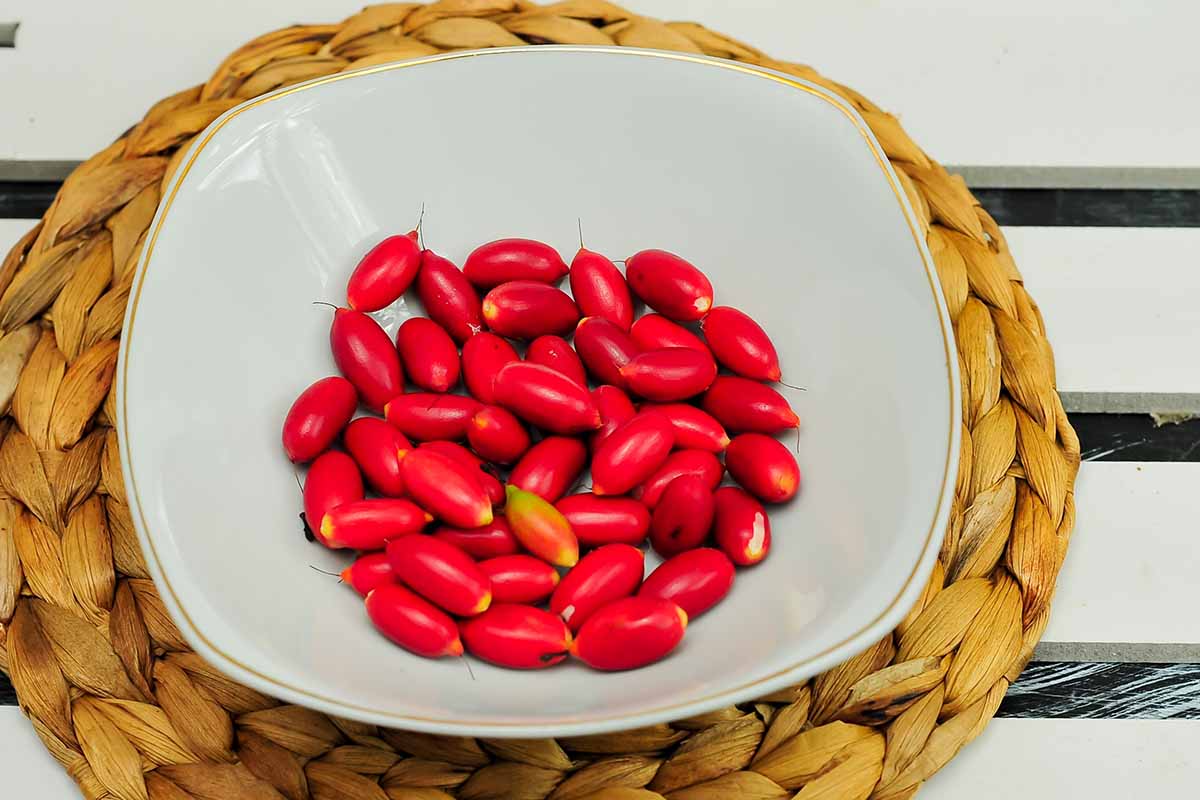
Miracle berries grew to become fairly the hit simply over a decade in the past when the thought of “taste tripping” events grew to become in style.
In a nutshell, you eat the berries together with your get together company after which style an array of bitter and bitter meals for a flavor-altering expertise.
Listed below are some issues to recollect about consuming miracle berries to get the perfect impact. First, attempt to coat your entire tongue with the pulp so that each one your style buds are coated with miraculin. In any other case, you would possibly nonetheless style among the authentic bitter or bitter flavors.
Additionally, don’t drink an excessive amount of liquid whereas making an attempt varied meals since it will wash the miraculin protein off.
Lastly, don’t overdo it with the acidic meals! Though they are going to style candy, these are nonetheless naturally acidic meals and should trouble your abdomen in case you eat an excessive amount of.
Some particularly enjoyable meals to strive embrace lemons and different citrus fruits, goat cheese, bitter dill pickles, tabasco sauce, and salt and vinegar flavored chips.
Fast Reference Rising Information
| Plant Kind: | Woody shrub | Flower/Foliage Shade: | White/inexperienced |
| Native to: | West Africa | Water Wants: | Average |
| Hardiness (USDA Zones): | 10-11 | Upkeep: | Average |
| Season: | Summer season to fall indoors, year-round outdoor | Tolerance: | Some drought |
| Publicity: | Vibrant, oblique gentle (indoors); half shade to full solar (outdoor) | Soil Kind: | Soilless mixture of peat moss and perlite |
| Time to Maturity: | 2-3 years to fruit | Soil pH: | 4.8-5.5 |
| Planting Depth: | Identical depth as container | Soil Drainage: | Properly-draining |
| Peak: | 2-4 ft (indoors), as much as 15 ft (outdoor) | Makes use of: | Berries used to change the flavour of meals, decorative houseplant |
| Unfold: | 1-3 ft (indoors), 6-8 ft (outdoor) | Household: | Sapotaceae |
| Development Price: | Sluggish | Genus: | Synsepalum |
| Frequent Pests and Ailments: | Mealybugs, scale, spider mites, root rot | Species: | Dulcificum |
The Final Dinner Celebration Visitor
Miracle fruit is a really particular houseplant. Not solely does it offer you a bountiful harvest and a novel style notion expertise, it’s additionally a decorative evergreen that gives magnificence to your property year-round.

I can’t consider a greater ceremonial dinner opener than “Do you need to alter the flavour of your meal tonight?”
Rising your personal miracle fruit offers you the chance to introduce this magical plant to your family and friends, and perhaps even get them keen on gardening too!
When you’ve had the pleasure of rising this taste-altering fruit, tell us within the feedback part under.
And for extra details about rising houseplants, take a look at these guides subsequent:


